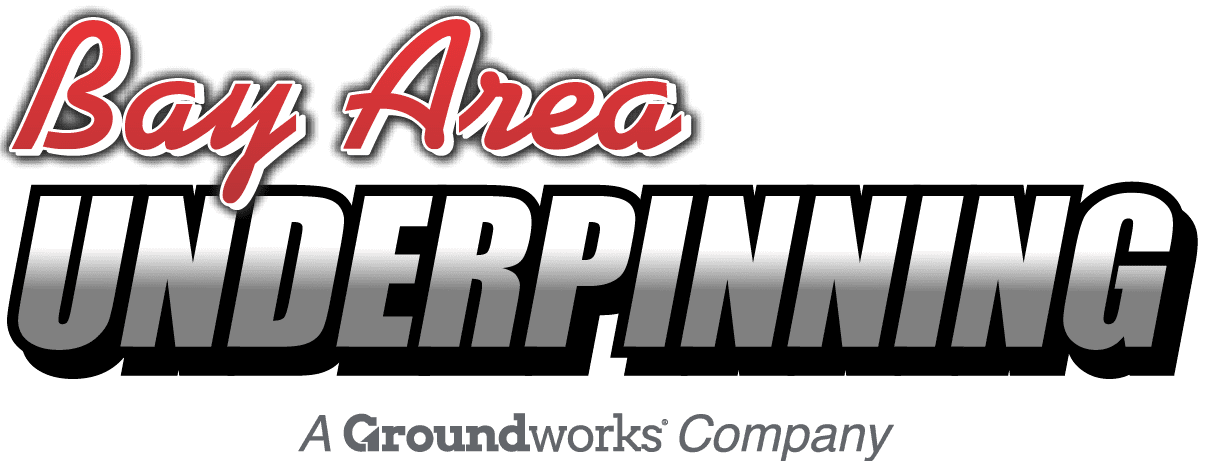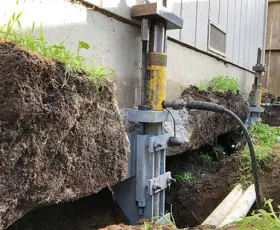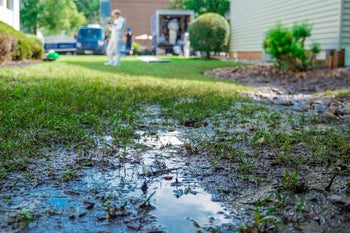Foundation Replacement Costs, Techniques and Alternatives
Table of Contents
1. Foundation Replacement Techniques
2. Foundation Replacement Costs
3. Should I Replace My Foundation Or Repair It?
4. Alternatives To Foundation Replacement
5. Signs And Causes Of Foundation Damage
Foundations are much more than just a slab of concrete under your home. Their most important function is to properly support the structure. Foundation problems are serious business because they can lead to structural problems with the building itself if they’re not promptly addressed.
The good news is that damage to a foundation can usually be repaired using a few different methods. However, sometimes a foundation is damaged to the point where it needs to be replaced. A home foundation replacement is indeed a major job, and it’s not cheap. However, it can have a major impact on the overall longevity of your home.
Foundation Replacement Techniques
Although removing and replacing a foundation is a major undertaking, the process is pretty straightforward…
The building is lifted up, supported, and the old foundation is removed. A new foundation is then installed, and the building is lowered onto it.
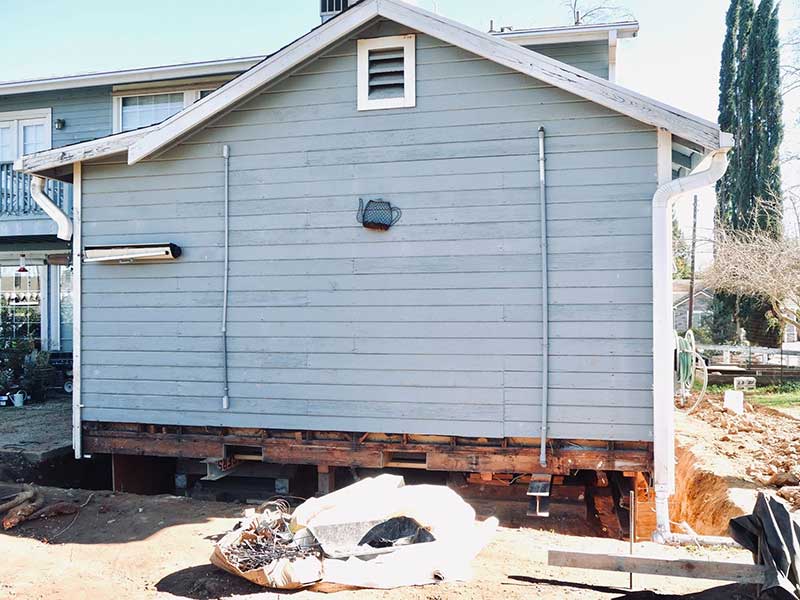
Foundation Replacement Costs
There are a number of variables that go into determining the cost of a foundation replacement. Therefore, it’s impossible to give even a ballpark figure. However, we can say that foundation replacement can range from $300-$1,000 per linear foot of foundation that needs to be replaced.
The cost of foundation replacement depends on what needs to be done, and that depends on what kind of damage there is to your foundation. Factors that figure into the cost of replacing a foundation include…
- The location of the building. Is there room for heavy equipment? Is there an area to dump the excavated soil and the debris from the old foundation?
- The linear footage of the foundation to be replaced. The total length of the perimeter foundation along with any interior foundation or isolated footings impact the cost.
- Does the building have a basement? Buildings with basements cost more because basement walls are a lot bigger than a spread footing and require more work to remove, to replace, and to install the correct drainage.
- Will the new foundation include a basement? If so, this adds to the cost.
- Does the entire foundation need to be replaced or just part of it? Sometimes only part of a foundation needs to be replaced.
Because of the number of factors involved – including your geographical location – it’s virtually impossible for us to give you a ballpark figure on the cost of replacing an entire foundation. However, we can say that the cost of foundation replacement should include things like excavation, grading, permits, etc. Of course, you’ll want to make sure the new foundation comes with a warranty. A replacement foundation should be something that’s installed once.
If you want to make sure the foundation replacement contractor isn’t going to recommend an expensive and unnecessary repair, you can hire a structural engineer to come out and do the inspection. If soil is an issue, you might also want to hire a geotechnical engineer to do an inspection as well. The structural engineer will use the geotechnical engineer’s recommendations for the proper design of the new foundation.
Should I Replace My Foundation Or Repair It?
Replacing a foundation is expensive because it’s a major construction project. However, if your foundation is still in good working condition and has only experienced settlement then replacing it may not be necessary. There are advanced repair techniques available today that lift sinking foundations. Read on to find out more about them…
Read more about – How to Underpinning A House
Alternatives To Foundation Replacement
In many cases, a damaged foundation can be repaired rather than replaced. This process – called underpinning – raises the sinking structure up to where it was before. If done correctly, it’s a permanent solution. In other words, your foundation won’t start sinking again.
There are three main methods used to raise a sinking foundation: hydraulic push piers, helical piers, and concrete piers.
Hydraulic Push Piers
Raising a sinking foundation using hydraulic push piers involves first attaching steel brackets to your foundation. A hydraulic ram then attaches to the brackets and drives heavy duty steel push piers deep into the soil until they reach load-bearing strata. Once the push piers are in place, hydraulic jacks are placed on top of them, and the building is raised. The jacks are then removed, but the piers remain permanently in place.
Helical Piers
Helical piers (also referred to as screw piles or helical piles) are another method used to lift up sinking foundations. They’re shaped like screws and are turned into the soil until they reach load-bearing strata. Hydraulic jacks are then attached in order to lift the building back up.
Drilled Concrete Piers
There are different types of foundation settlement. Structures built on hillsides are susceptible to soil creep. In other words, over time, the soil migrates downhill. This can be a cause of foundation settlement and lateral movement.
Drilled concrete piers are commonly used on hillsides to resist this lateral movement. Here’s how it works…
A drill rig is used to drill large diameter holes – typically 18” in diameter and from 15-30 feet deep – next to the foundation. Reinforcement cages are then placed in the holes and concrete is poured in to create the cast-in-place drilled concrete pier.
The cost of drilled concrete piers is based on a variety of factors including the depth, diameter, and number of piers needed. Also, whether or not a standard drill rig can access the area. If not, a portable drill rig is needed and that will increase the cost.
Signs And Causes Of Foundation Damage
Extensive movement in the soil under a foundation can damage it. Now, it is true that all structures move to some extent because soil isn’t perfectly still and a small amount of movement in your foundation is to be expected. The uniform settling that happens within a few years of construction is perfectly normal and nothing to be alarmed about. If any problems do result from it, they’re minimal and can be easily repaired.
The problem is differential settling. In other words, one part of a structure’s foundation sinks while the rest of it stays in place. This can happen for a variety of reasons including when the soil contains a lot of clay, when it wasn’t properly compacted before construction began, or maybe because a high water table caused considerable movement in the soil. Even large tree roots can cause foundation damage when they get under a foundation. Of course, poor construction can also be a culprit.
Whatever the cause, when parts of a foundation begin to sink, cracks appear in walls, floors, and ceilings, doors and windows stick, walls bulge, floors slope, moldings are displaced, brick walls develop stair step cracks, gaps appear between walls, ceilings, and floors etc. These are noticeable problems you shouldn’t have any trouble spotting.
To sum up…
Your goal should be to spot foundation issues early, before they have a chance to turn into serious problems. Of course, if you repair or replace your foundation, and then you plan to sell your home, you’ll need to disclose this to potential buyers. While this might sound a bit scary, a recent foundation repair or replacement can actually work in your favor because it means the home is stable. Prospective buyers will see this as a plus, especially in areas with expansive soil.
Trouble with your foundation is not something you can afford to ignore. Contact us today to set up an inspection.
More Resources
Publish Date:
Last Modified Date:
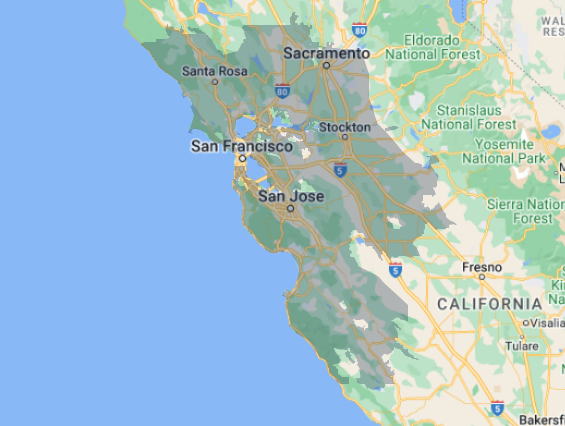
Our Locations
2333 Courage Dr. Suite C
Fairfield, CA 94533
1161 N Fair Oaks Ave
Sunnyvale, CA 94089
